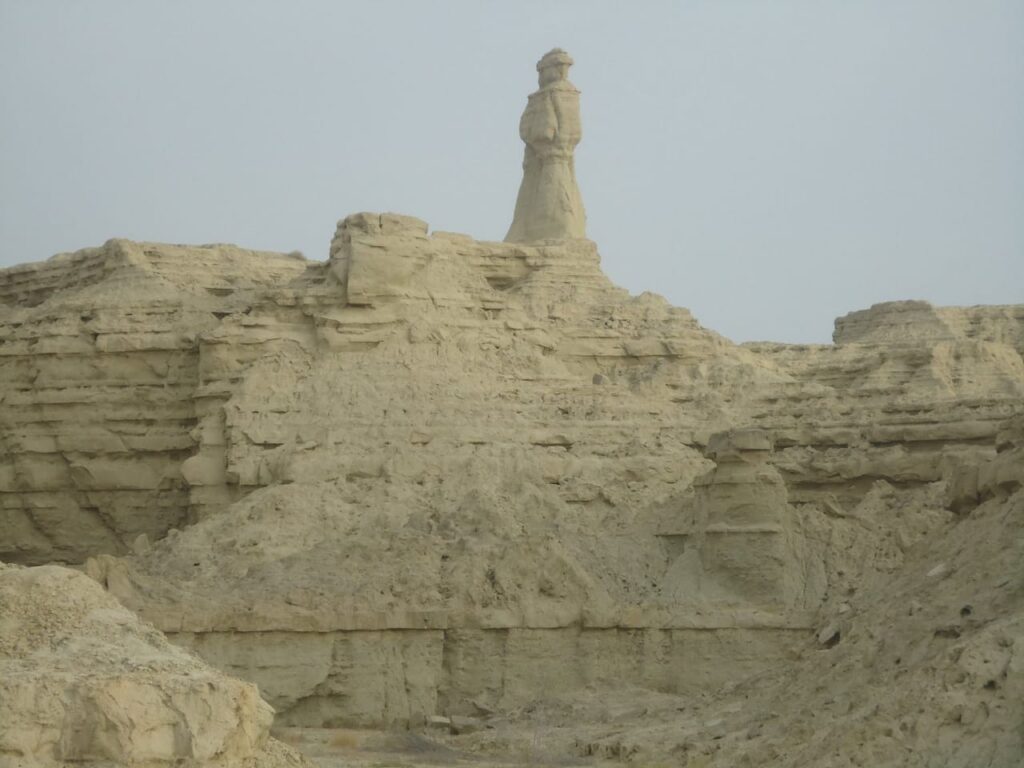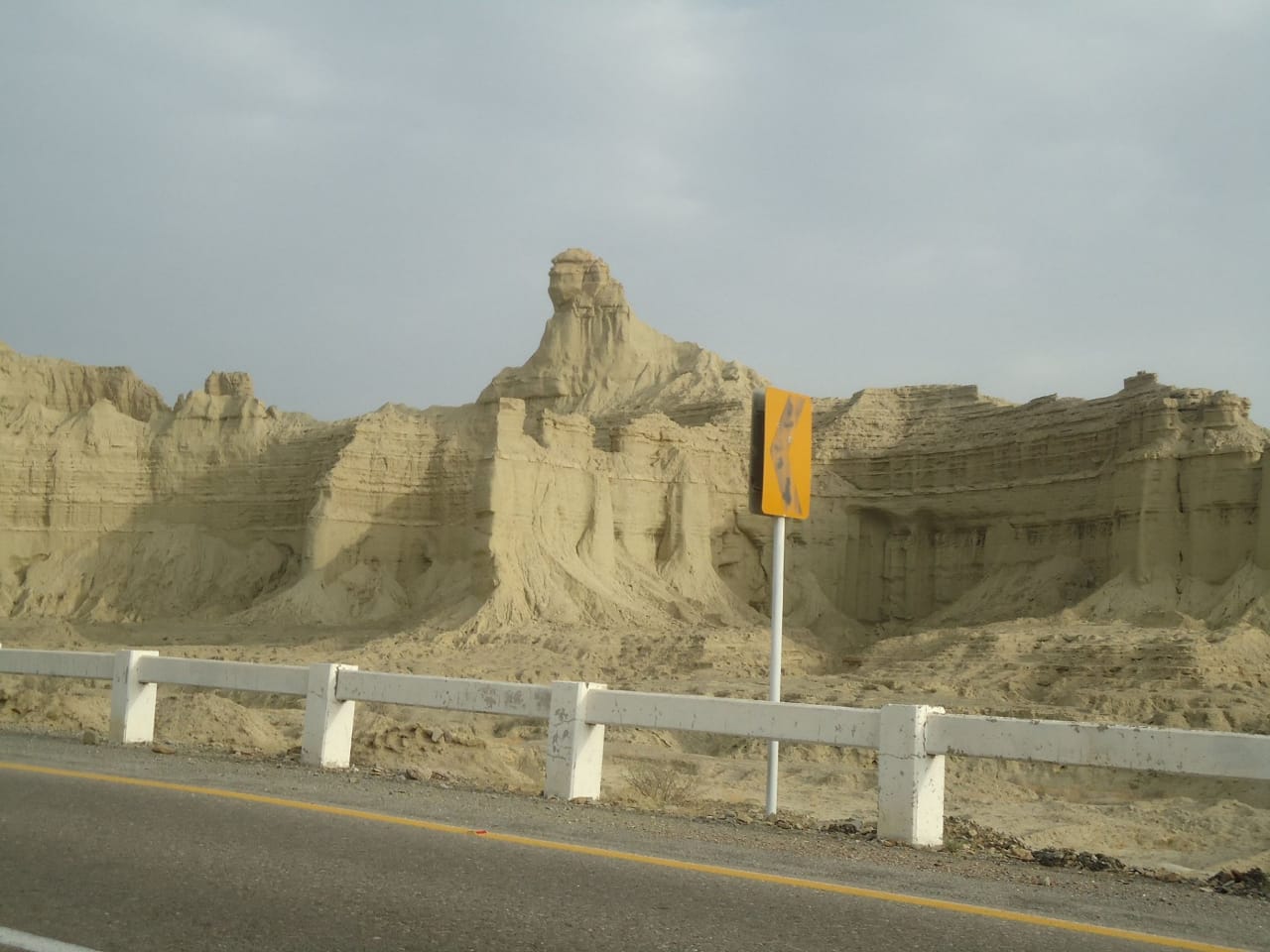Concealed within the desolate, rocky landscape of the Makran coastline of Southern Balochistan, Pakistan, is an architectural gem that has gone unnoticed and unexplored for centuries. As it is popularly called, the Balochistan Sphinx came into the public eye only after the Makran Coastal Highway opened in 2004, linking Karachi with the port town of Gwadar on the Makran coast. A four-hour-long drive (240 km) from Karachi, through meandering mountain passes and arid valleys, brings one to the Hingol National Park where the sphinx is located.
I have not personally visited the Baluchistan Sphinx. Still, when I saw some of the Sphinx photographs and associated structures posted by visitors to the Hingol National Park, I was really struck by how closely it resembled the Sphinx of Egypt. Not only does the Baluchistan Sphinx have a well-defined face, but it also wears the Nemes head-dress and head-band of the Egyptian pharaoh, and it is seated in a crouching position. The elevated platform on which the Sphinx is located has been carved with pillars, niches, and asymmetric patterns, and there appears to be a series of steps leading to the platform. It is challenging to accept that all of this is the work of random natural forces. On the contrary, the entire site gives the impression of a grand architectural complex, eroded by the elements and covered by sediment layers, possibly due to the recurrent tsunamis on the Makran coastline.


The question is, how old is this monument, and which civilization could have built it? Does it date from the Indus period, or could it be even older? We know that the Indus Valley Civilization extended along the Makran coastline, and its westernmost archaeological site is Sutkagen Dor, near the Iranian border. So, it could be an Indus-era monument. When the Chinese pilgrim Hiuen Tsang had visited Makran in the 7th century AD, he observed that the coastline was dotted with hundreds of Buddhist monasteries and Hindu Temples.
Where have they all gone? Have they all been eroded and covered with sediment so that they are now regarded as natural formations? There is no doubt that a thorough archaeological survey of the Makran coastline, particularly the Sphinx and Princess of Hope areas, is urgently required to find out when the Sphinx complex was built and what ancient secrets lie hidden within this enigmatic monument.
A cursory glance at the impressive sculpture shows that the sphinx has a well-defined jawline and clearly discernible facial features such as the eyes, nose, and mouth, which are placed in perfect proportion to each other.


The sphinx appears to be decked up in a head-dress that closely resembles the Nemes head-dress of the Egyptian pharaoh. The Nemes headdress is a striped headcloth that covers the crown and back of the head. It has two large, conspicuous flaps that hang down behind the ears and in front of both shoulders. The ear-flaps can be clearly seen on the Balochistan sphinx (including some stripe marks on it as well). The sphinx has a horizontal groove across the forehead, which corresponds to the pharaonic head-band that holds the Nemes head-dress in place.
One can easily make out the contours of the sphinx’s reclining forelegs, which terminate in very well-defined paws. It isn’t easy to see how nature could have carved out a statue that resembles a well-known mythical animal to such an extraordinarily high degree.
The presence of the Sphinx carvings in different ancient cultures
People generally believe that sphinx statues are found only in Egypt, but the truth is that they are widely dispersed worldwide. There are slight variations in their representations across cultures, but their function is the same. They act as protectors of sacred sites, and they used to be placed in pairs on either side of the entrance to temples, tombs, and monuments.
A few part of this article has been published on Bibhu Dev Misra’s personal website. Here republishing with prior permission.

Bibhu Dev Misra is an independent research investigator and writer on ancient cultures, archaeology, science, and symbolism. An engineer and MBA, he has worked for more than two decades as an Information Technology consultant for large global organizations, including the World Bank and the United Nations. He can be contacted at bibhumisra@gmail.com

